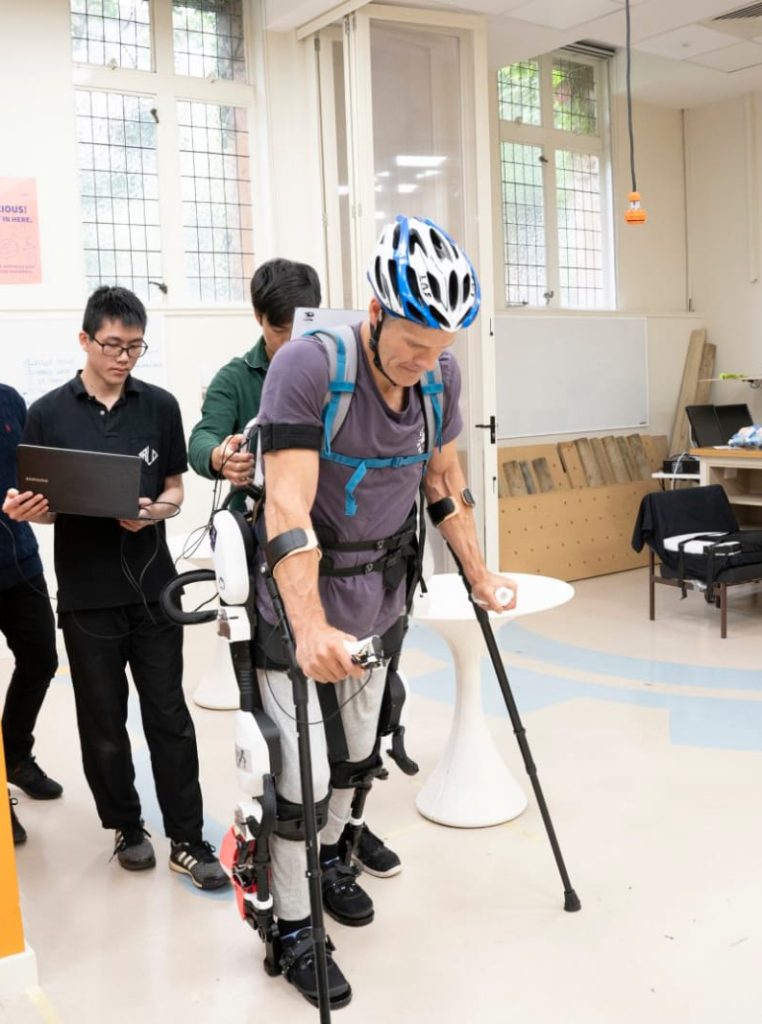AQA/Spire has been involved with Team ALEX (Advanced Lower-Extremity Exoskeleton) since it formed over two years ago. That journey was documented on this site in April in The exoskeleton rollercoaster.
So, what are exoskeletons actually like to use? And what benefits might they offer? Chief pilot for the project Brad Axford offers some insight.
Who is Brad?
Brad has been living with a T12 complete spinal injury for the past two years. He’s worked as a massage therapist for most of the last 20 years, working with the human body and learning how to heal it. Brad is also interested in technology, so when it came to a project like this, he jumped at the chance to be involved.
What are exoskeletons?
Exoskeletons are wearable electromechanical devices that can enhance the strength or stamina of an able-bodied user, or allow people with limited mobility to simulate walking. While the technology has been rapidly improving, exoskeletons are a long way from being accessible and effective mobility aids. They’re very expensive ($40,000 – $100,000), slow moving (average speed of 0.26 metres per second, compared to average walking speed of 1.2 m/s), and they struggle to move across uneven or sloping terrain.
As tools for rehabilitation, though, promising results are emerging
What are they good for?
“Obviously there are lots of health problems that come from sitting so much of the time – using an exo can help with some of them,” says Brad.
“The weight bearing is great for bone density and strengthening. Your muscles and ligaments are all going to benefit from getting that kind of movement and stretching, and from the different load patterns on the body.

What do they feel like?
“It was quite weird initially”, says Brad, describing the first time he stood up in the exoskeleton. It was nine months post-injury.
“It felt good, but very foreign. It was an interesting sensation, being up without any feeling in my lower body.
“It felt very unsafe, very unstable. But I had the crutches and the spotters around me. Once I got used to the sensation of moving it was more comfortable.”
To pilot the exoskeleton, Brad selects one of three modes – walk, stand up, or sit down – via a switch on one of the crutches. Once a mode is selected, he pulls a trigger to execute the movement – a single step in the case of walk mode.
The trick, according to Brad, was anticipating the way in which the exoskeleton would move.
“Once I could do that, I could stay balanced throughout the movement, rather than trying to catch myself afterwards. The result was a much more rhythmic and fluid gait.
“It was a great feeling when I first started hitting that rhythm.”

How did Brad’s piloting compare to his international rivals?
For the exoskeleton category of the CYBATHLON competition, teams compare times traversing an obstacle course. When the event rolled around, Brad checked out his would-be competition via online videos.
“One of the teams that won it went through the course at a blistering pace,” says Brad.
“Justin, our team coordinator, joked that had we competed, we would have only been ten minutes behind.
“But, in our defence, it wasn’t exactly an equal playing field.
“A lot of the international teams are made up of professionals, working full-time, whereas our team is made up of final-year Engineering students, which means we have a new team every year, and they’re fitting the Exo project in alongside other studies.”
What’s next?
Brad is looking forward to competing with the rest of team in a Melbourne competition in 2022, and hopefully, internationally in 2024.
- June 30, 2021




